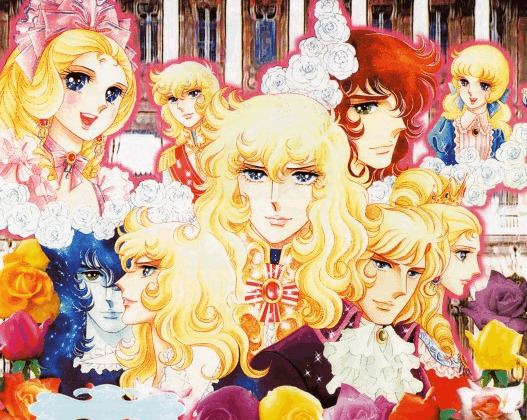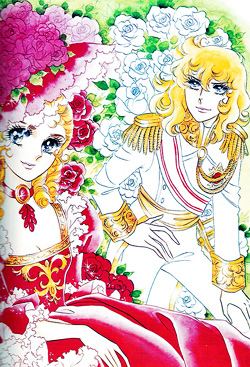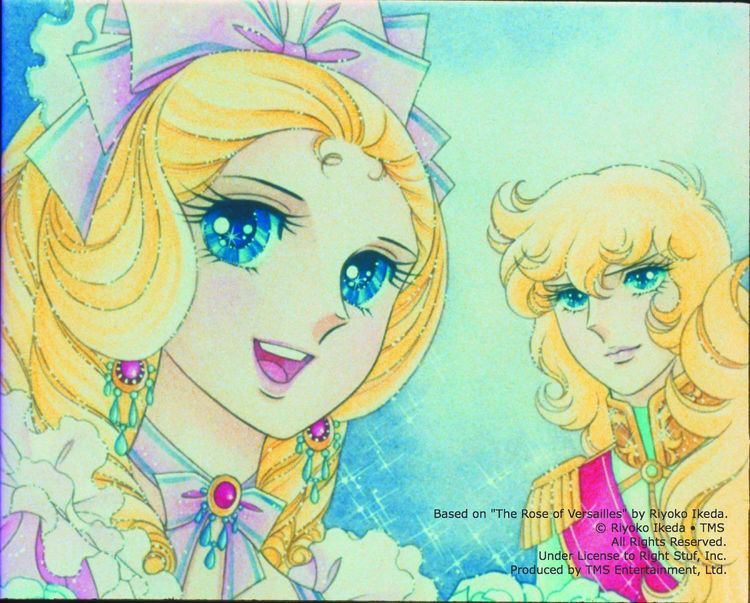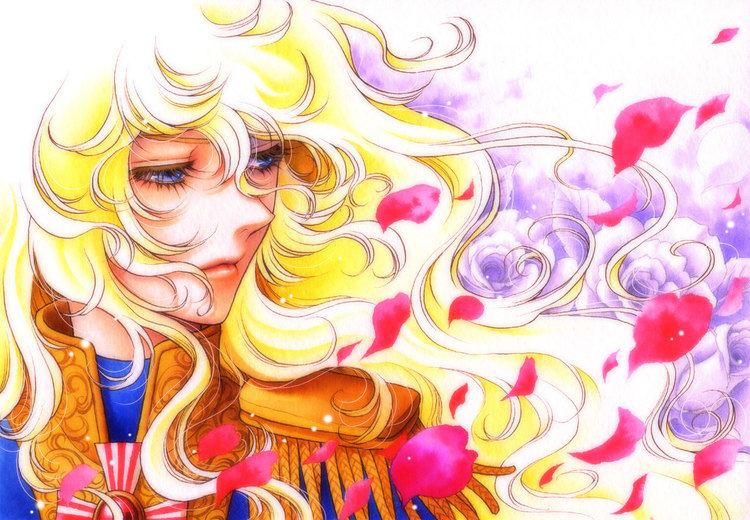Original run 1972 – 1973 | Demographic Shōjo | |
 | ||
Genre Historical, Drama, Romance, Tragedy Similar Mojacko, Captain Tsubasa, Candy Candy, Glass Mask, Aim for the Ace! | ||
Theme song rose of versailles hot clip
The Rose of Versailles (ベルサイユのばら, Berusaiyu no Bara), also known as Lady Oscar or La Rose de Versailles, is one of the best-known titles in shōjo manga and a media franchise created by Riyoko Ikeda. It has been adapted into several Takarazuka Revue musicals, as well an anime television series, produced by Tokyo Movie Shinsha and broadcast by the anime television network Animax and Nippon Television. The show remains incredibly popular in Italy.
Contents
- Theme song rose of versailles hot clip
- Hiroko suzuki the rose of versailles bara wa utsukushiku chiru
- Plot
- Development
- Manga
- Gaiden
- Anime
- Films
- Lady Oscar
- Inochi arukagiri aishite
- Musicals
- Other
- Reception
- Legacy
- References

The Rose of Versailles focuses on Oscar François de Jarjayes, a girl raised as a man to become her father's successor as leader of the Palace Guards. A brilliant combatant with a strong sense of justice, Oscar is proud of the life she leads, but becomes torn between class loyalty and her desire to help the impoverished as revolution brews among the oppressed lower class. Also important to the story are her conflicting desires to live life as both a militant and a regular woman as well as her relationships with Marie Antoinette, Count Axel von Fersen, and servant and best friend André Grandier.

It features elements of the yuri genre embodied in the relationship between Oscar and her protégée Rosalie Lamorlière, the secret daughter of the scheming Madame de Polignac. Rosalie refers to Oscar as her first love. Many of the court ladies also greatly adore Oscar, openly admiring her at parties and become very jealous when she brings female companions to them.

Hiroko suzuki the rose of versailles bara wa utsukushiku chiru
Plot

The setting is in France, before and during the French Revolution. In the early part of the series, the main character is the young, flighty Queen of France, Marie Antoinette, however later the focus of the story shifts to a woman named Oscar François de Jarjayes. Oscar's father, General Jarjayes, despaired over never getting a son (he had six daughters), and decided to raise his youngest daughter as a man. He trained her well in the arts of fencing, horsemanship, and medieval combat. Oscar often practiced her skills with her best friend, companion and (technically) servant, André Grandier, whom she almost always defeated. André is the grandson of her nanny and thus they spent most of their time together in harmonic friendship; near the end of the story, this friendship blossoms into mutual love.
Oscar is the commander of the Royal Guard and responsible for the safety of Marie Antoinette, as well as the rest of the royal family. The story revolves around Oscar's growing realization of how France is governed, and the plight of the poor. Another important storyline is the love story between Marie Antoinette and the Swedish Count Axel von Fersen. The affair between the two is the subject of rumours through all of France, endangering the Queen's reputation and driving Oscar to request the Count to leave the country.
After the Count decides to leave and sign up for the American war of independence, Marie Antoinette becomes lovesick. She spends money in excess —expensive jewellery and clothes, attending balls every other night— to distract herself from pining for the only man she loved. This, in turn, weighs on the taxpayers of France, and poverty spreads throughout the country due to Marie Antoinette's squandering of money. Both the Affair of the Diamond Necklace and the appearance of the infamous Gabrielle de Polastron, comtesse de Polignac are central plot events taken from history, as well as the French Revolution and the fall of the Bastille—all given interesting interpretations through the fictional character Oscar and her companions.
On July 14, 1789, the Taking of the Bastille, the crowds rebel but lack strategy, giving the military the advantage and making themselves easy target for cannon fire. However, Oscar and the regiment B then arrive to help organize the insurgents. During the following fierce battle, Oscar is shot and killed, but the Bastille eventually falls, symbolically striking down the French monarchy. After the Bastille is taken, the revolutionaries burst into the Palace searching for Marie Antoinette and her family. Many guards are killed and the royal family taken prisoner. Big trials are started for Marie Antoinette and Louis XVI, but finally, both are declared guilty and guillotined.
Development
Ikeda's editors were opposed to her idea of a biography of Marie Antoinette, and only its popularity among readers kept The Rose of Versailles in publication. Ikeda had read Stefan Zweig's biography of Marie Antoinette in high school, and the first chapters focus on the queen, casting her as a shoujo heroine, and du Barry as a rival. Oscar was created as a supporting character. Oscar eclipsed Marie Antoinette in popularity and due to reader feedback became the main character.
Manga
The Rose of Versailles is one of the most influential manga ever written. The manga was serialized in Shueisha's Margaret Magazine in 1973, and became an instant success. It was published on 24 May 1982 and contains 10 volumes.
There is a less-known "sequel". It is known as Eikou no Napoleon or "The Glory of Napoleon". It has a few of the original characters and is mostly about the Empire of Napoleon I of France.
In 1983, the first two volumes of The Rose of Versailles were translated into English by Frederik L. Schodt for the purpose of teaching English to Japanese speakers and released in North America by the North American branch of Sanyusha. The Rose of Versailles was the first commercially translated manga to be available in North America. A snippet of the translated manga was also included in Schodt's Manga! Manga! The World of Japanese Comics book. Udon Entertainment has officially announced the publication rights, with a scheduled release for 2016.
Gaiden
The Berusaiyu no Bara Gaiden series is a collections of short stories written by Riyoko Ikeda. These stories were published in two separate magazines in 1974 (first publication) after the serialization of the manga Berusaiyu no Bara, and 1984–1985 (second publication).
The gaiden stories were adapted into musicals in 2008–2009.
Anime
In 1979, The Rose of Versailles was released in Japan as a 40-episode (and 1 recapitulation) animated television series, which ran from October 1979 to September 1980. Besides Japan, the series has also been broadcast in several other countries of Europe and Latin America under the title of Lady Oscar. The anime was directed by Tadao Nagahama (episodes 1-18) and Osamu Dezaki (episodes 19-40), who brought a cinematic approach to the series. Shingo Araki was the animation director and co-character designer along with Akio Sugino and Michi Himeno. Kōji Makaino was in charge of the soundtrack.
The production staff included the most recognized animation professionals then, who contributed in the making of the 40 episodes of the anime. In spite of the difficulties they had to go through, the staff could continue with their work and took advantage of the problems. The most important of said incidents was the change of direction at the middle of the project, which marked a notable difference between the first half of the anime (directed by Tadao Nagahama) and the second one (directed by Osamu Dezaki).
The anime was finally aired on October 10, 1979 in Japan on the channel Nippon TV. From this point on, the series would be aired every Wednesday until September 3, 1980, with the airing of the last episode.
Films
There have been two films based on the Rose of Versailles series. A third film was in pre-production 2007-2009 at Toei, but later reports claim it has been cancelled.
Lady Oscar
Lady Oscar is a 1979 film, written and directed Jacques Demy, with music composed by Michel Legrand. Lady Oscar is a French-Japanese co-production, and was shot in France. Frederik L. Schodt translated the entire manga series into English as a reference for the producers of this film, but gave the only copy of the translation to them and it was lost.
Inochi arukagiri aishite
Inochi arukagiri aishite (I'll Love You as Long as I Live) is a film that summarizes the whole anime. It was released first on video on May 21, 1987 and received a theatrical release on May 19, 1990.
Musicals
Rose of Versailles has also been dramatized for Takarazuka Revue by Shinji Ueda. Rose of Versailles has been called Takarazuka's most popular show. The show's role in Takarazuka history is particularly notable as it established the "Top Star" system that remains in place to this day. Rose of Versailles also triggered a large surge in the revue's popularity, commonly referred to as the "BeruBara Boom" (ベルバラブーム, Berubara Buumu).
From 1974 to 1976, all four Takarazuka troupes staged The Rose of Versailles, drawing a total audience of 1.6 million. In 1989, it was restaged drawing an audience of 2.1 million.
The most recent shows were the gaiden adaptations performed in mid-to-late 2008 by Snow troupe (led by Natsuki Mizu), Flower Troupe (led by Sei Matobu) and Star Troupe (led by Kei Aran). The scenarios for these new side-story adaptations were developed by Riyoko Ikeda specifically for the Revue.
Other
To mark the 30th anniversary of the series' beginning, Shueisha released an Encyclopedia of Rose of Versailles (ベルサイユのばら大事典) in 2002, written by Ikeda.
Reception
Rose of Versailles is currently 14th on the list of all-time best-selling shōjo manga, having sold a grand total of 15 million volumes worldwide and 12 million in Japan only, a "nation-wide best seller". In terms of circulation per volume, it is in fourth place with an average of 1,500,000 sales per volume. It is not well known in North America (except in Quebec) due to its age and lack of publicity, but remains a treasured classic in Japanese manga. The anime was ranked in the top 50 of a list of favourite anime series in 2005. So far, the manga and anime have been translated into Arabic, Turkish, Korean, French, Spanish, Italian, German, Indonesian and Chinese. The "immense popularity" of the 1974 Takarazuka musical gained widespread attention, including academic attention, for not only Rose of Versailles, but for the field of shōjo manga. The research that went into the setting of Rose of Versailles led some teachers to use it in their classrooms and purchase it for their school libraries, which was a "Japanese educational first". The popularity of the manga also created a boom in the study of the French language and made France, particularly Versailles a popular tourist destination for Japanese travellers.
Moto Hagio believes the popularity of The Rose of Versailles influenced publishers to routinely collect serialized manga in paperback format.
Susan J. Napier has described the court of The Rose of Versailles as being "a particularly good example of idealized Western Otherness". Tierney says that the aesthetics of The Rose of Versailles cannot be described as purely Japanese or Western. Deborah Shamoon says that Rose of Versailles can be used to track the development of shōjo manga from being "a genre for children to being one for older readers". The bloody end of the main characters, while shocking, also whet the audience's appetite for more serious stories. Shamoon sees the Oscar-Andre relationship as very different from the Cinderella-Prince Charming stories which "dominated" shōjo manga in the 1960s, where the female protagonist would lose her identity to her boyfriend. Shamoon considers that the Oscar-Andre relationship follows the pattern of pre-war douseiai shōjo novels, which featured same-sex love between girls. Kazuko Suzuki says that after RoV, "several works" were created with "nonsexual" female protagonists like Oscar, who realize their "womanness" upon falling in love.
Rose of Versailles is famous for having the first "bed scene" in manga that was depicted by a woman, which has had a "profound impact" on female readers, including fan criticism of the adaptation of this scene to the anime. Yukari Fujimoto has said that "for us junior and senior high school girls at that time, our concept of sex was fixed by that manga."
Legacy
The series is generally cited as having been a major influence on Revolutionary Girl Utena and Le Chevalier D'Eon.
